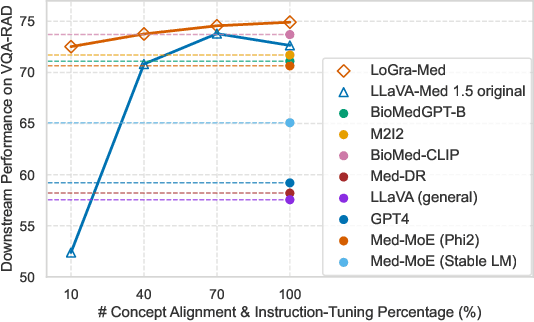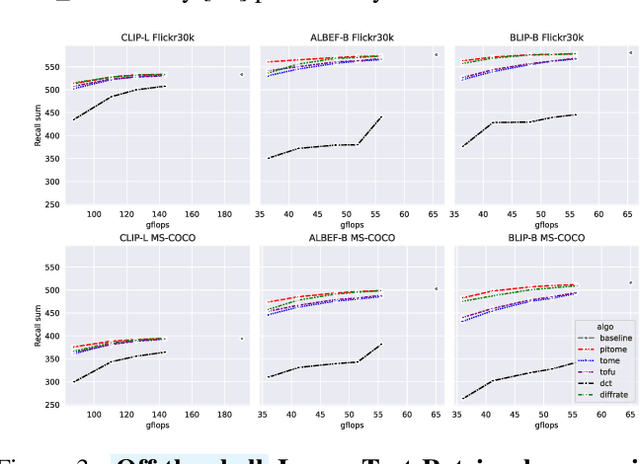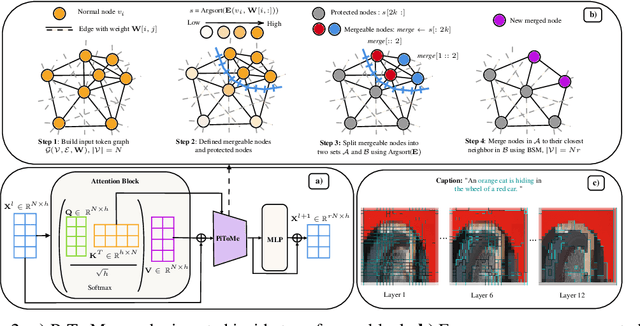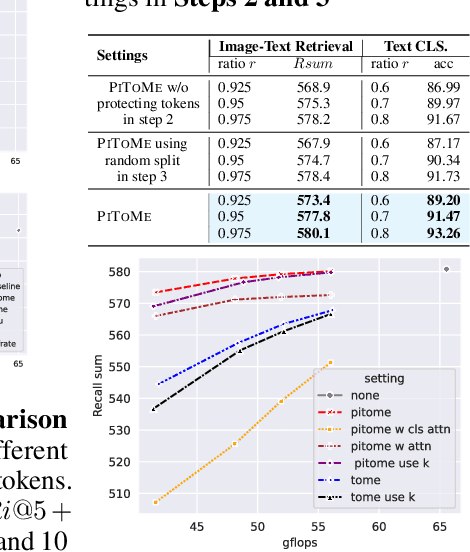Pengtao Xie
University of California San Diego
DreamPRM: Domain-Reweighted Process Reward Model for Multimodal Reasoning
May 26, 2025Abstract:Reasoning has substantially improved the performance of large language models (LLMs) on complicated tasks. Central to the current reasoning studies, Process Reward Models (PRMs) offer a fine-grained evaluation of intermediate reasoning steps and guide the reasoning process. However, extending PRMs to multimodal large language models (MLLMs) introduces challenges. Since multimodal reasoning covers a wider range of tasks compared to text-only scenarios, the resulting distribution shift from the training to testing sets is more severe, leading to greater generalization difficulty. Training a reliable multimodal PRM, therefore, demands large and diverse datasets to ensure sufficient coverage. However, current multimodal reasoning datasets suffer from a marked quality imbalance, which degrades PRM performance and highlights the need for an effective data selection strategy. To address the issues, we introduce DreamPRM, a domain-reweighted training framework for multimodal PRMs which employs bi-level optimization. In the lower-level optimization, DreamPRM performs fine-tuning on multiple datasets with domain weights, allowing the PRM to prioritize high-quality reasoning signals and alleviating the impact of dataset quality imbalance. In the upper-level optimization, the PRM is evaluated on a separate meta-learning dataset; this feedback updates the domain weights through an aggregation loss function, thereby improving the generalization capability of trained PRM. Extensive experiments on multiple multimodal reasoning benchmarks covering both mathematical and general reasoning show that test-time scaling with DreamPRM consistently improves the performance of state-of-the-art MLLMs. Further comparisons reveal that DreamPRM's domain-reweighting strategy surpasses other data selection methods and yields higher accuracy gains than existing test-time scaling approaches.
Defense against Prompt Injection Attacks via Mixture of Encodings
Apr 10, 2025Abstract:Large Language Models (LLMs) have emerged as a dominant approach for a wide range of NLP tasks, with their access to external information further enhancing their capabilities. However, this introduces new vulnerabilities, known as prompt injection attacks, where external content embeds malicious instructions that manipulate the LLM's output. Recently, the Base64 defense has been recognized as one of the most effective methods for reducing success rate of prompt injection attacks. Despite its efficacy, this method can degrade LLM performance on certain NLP tasks. To address this challenge, we propose a novel defense mechanism: mixture of encodings, which utilizes multiple character encodings, including Base64. Extensive experimental results show that our method achieves one of the lowest attack success rates under prompt injection attacks, while maintaining high performance across all NLP tasks, outperforming existing character encoding-based defense methods. This underscores the effectiveness of our mixture of encodings strategy for both safety and task performance metrics.
Improving the Language Understanding Capabilities of Large Language Models Using Reinforcement Learning
Oct 14, 2024Abstract:Large language models (LLMs), built on decoder-only transformers, excel in natural language generation and adapt to diverse tasks using zero-shot and few-shot prompting. However, these prompting methods often struggle on natural language understanding (NLU) tasks, where encoder-only models like BERT-base outperform LLMs on benchmarks like GLUE and SuperGLUE. This paper explores two approaches-supervised fine-tuning (SFT) and proximal policy optimization (PPO)-to enhance LLMs' NLU abilities. To reduce the cost of full-model fine-tuning, we integrate low-rank adaptation (LoRA) layers, limiting updates to these layers during both SFT and PPO. In SFT, task-specific prompts are concatenated with input queries and ground-truth labels, optimizing with next-token prediction. Despite this, LLMs still underperform compared to models like BERT-base on several NLU tasks. To close this gap, we apply PPO, a reinforcement learning technique that treats each token generation as an action and uses a reward function based on alignment with ground-truth answers. PPO then updates the model to maximize these rewards, aligning outputs with correct labels. Our experiments with LLAMA2-7B show that PPO improves performance, with a 6.3-point gain over SFT on GLUE. PPO exceeds zero-shot by 38.7 points and few-shot by 26.1 points on GLUE, while surpassing these by 28.8 and 28.5 points on SuperGLUE. Additionally, PPO outperforms BERT-large by 2.7 points on GLUE and 9.3 points on SuperGLUE. The improvements are consistent across models like Qwen2.5-7B and MPT-7B, highlighting PPO's robustness in enhancing LLMs' NLU capabilities.
BiDoRA: Bi-level Optimization-Based Weight-Decomposed Low-Rank Adaptation
Oct 13, 2024



Abstract:Parameter-efficient fine-tuning (PEFT) of large language models (LLMs) has gained considerable attention as a flexible and efficient way of adapting LLMs to downstream tasks. Among these methods, weighted decomposed low-rank adaptation (DoRA) has emerged as a promising approach. DoRA bridges the gap between low-rank adaptation (LoRA) and full fine-tuning (FT) by decomposing the weight matrices into magnitude and direction components, thereby maintaining learning behavior similar to FT. Although DoRA shows encouraging performance, it introduces additional parameters compared to LoRA, which potentially increases the risk of overfitting. Moreover, optimizing magnitude and direction simultaneously leads to a coupled gradient updating pattern for both components, limiting its learning capacity. To overcome these limitations, we propose BiDoRA, a bi-level optimization-based PEFT method. In BiDoRA, the direction and magnitude components are optimized on two distinct datasets at different optimization levels, mitigating the risk of overfitting. Additionally, the asynchronous optimization of the two components promotes their decoupling, allowing for more flexible gradient updates suitable for various downstream tasks. Evaluation of BiDoRA on fourteen datasets spanning natural language understanding, natural language generation, and token classification reveals that it significantly outperforms DoRA and other PEFT methods. The superior performance of BiDoRA underscores its effectiveness. The code for BiDoRA is available at https://anonymous.4open.science/r/BiDoRA-5D31.
AM-SAM: Automated Prompting and Mask Calibration for Segment Anything Model
Oct 13, 2024



Abstract:Segment Anything Model (SAM) has gained significant recognition in the field of semantic segmentation due to its versatile capabilities and impressive performance. Despite its success, SAM faces two primary limitations: (1) it relies heavily on meticulous human-provided prompts like key points, bounding boxes or text messages, which is labor-intensive; (2) the mask decoder's feature representation is sometimes inaccurate, as it solely employs dot product operations at the end of mask decoder, which inadequately captures the necessary correlations for precise segmentation. Current solutions to these problems such as fine-tuning SAM often require retraining a large number of parameters, which needs huge amount of time and computing resources. To address these limitations, we propose an automated prompting and mask calibration method called AM-SAM based on a bi-level optimization framework. Our approach automatically generates prompts for an input image, eliminating the need for human involvement with a good performance in early training epochs, achieving faster convergence. Additionally, we freeze the main part of SAM, and modify the mask decoder with Low-Rank Adaptation (LoRA), enhancing the mask decoder's feature representation by incorporating advanced techniques that go beyond simple dot product operations to more accurately capture and utilize feature correlations. Our experimental results demonstrate that AM-SAM achieves significantly accurate segmentation, matching or exceeding the effectiveness of human-generated and default prompts. Notably, on the body segmentation dataset, our method yields a 5% higher dice score with a 4-example few-shot training set compared to the SOTA method, underscoring its superiority in semantic segmentation tasks.
TapWeight: Reweighting Pretraining Objectives for Task-Adaptive Pretraining
Oct 13, 2024



Abstract:Large-scale general domain pretraining followed by downstream-specific finetuning has become a predominant paradigm in machine learning. However, discrepancies between the pretraining and target domains can still lead to performance degradation in certain cases, underscoring the need for task-adaptive continued pretraining (TAP). TAP methods typically involve continued pretraining on task-specific unlabeled datasets or introducing additional unsupervised learning objectives to enhance model capabilities. While many TAP methods perform continued pretraining with multiple pretraining objectives, they often determine the tradeoff parameters between objectives manually, resulting in suboptimal outcomes and higher computational costs. In this paper, we propose TapWeight, a task-adaptive pretraining framework which automatically determines the optimal importance of each pretraining objective based on downstream feedback. TapWeight reweights each pretraining objective by solving a multi-level optimization problem. We applied TapWeight to both molecular property prediction and natural language understanding tasks, significantly surpassing baseline methods. Experimental results validate the effectiveness and generalizability of TapWeight.
LoGra-Med: Long Context Multi-Graph Alignment for Medical Vision-Language Model
Oct 03, 2024



Abstract:State-of-the-art medical multi-modal large language models (med-MLLM), like LLaVA-Med or BioMedGPT, leverage instruction-following data in pre-training. However, those models primarily focus on scaling the model size and data volume to boost performance while mainly relying on the autoregressive learning objectives. Surprisingly, we reveal that such learning schemes might result in a weak alignment between vision and language modalities, making these models highly reliant on extensive pre-training datasets - a significant challenge in medical domains due to the expensive and time-consuming nature of curating high-quality instruction-following instances. We address this with LoGra-Med, a new multi-graph alignment algorithm that enforces triplet correlations across image modalities, conversation-based descriptions, and extended captions. This helps the model capture contextual meaning, handle linguistic variability, and build cross-modal associations between visuals and text. To scale our approach, we designed an efficient end-to-end learning scheme using black-box gradient estimation, enabling faster LLaMa 7B training. Our results show LoGra-Med matches LLAVA-Med performance on 600K image-text pairs for Medical VQA and significantly outperforms it when trained on 10% of the data. For example, on VQA-RAD, we exceed LLAVA-Med by 20.13% and nearly match the 100% pre-training score (72.52% vs. 72.64%). We also surpass SOTA methods like BiomedGPT on visual chatbots and RadFM on zero-shot image classification with VQA, highlighting the effectiveness of multi-graph alignment.
Generative AI Enables Medical Image Segmentation in Ultra Low-Data Regimes
Aug 30, 2024Abstract:Semantic segmentation of medical images is pivotal in applications like disease diagnosis and treatment planning. While deep learning has excelled in automating this task, a major hurdle is the need for numerous annotated segmentation masks, which are resource-intensive to produce due to the required expertise and time. This scenario often leads to ultra low-data regimes, where annotated images are extremely limited, posing significant challenges for the generalization of conventional deep learning methods on test images. To address this, we introduce a generative deep learning framework, which uniquely generates high-quality paired segmentation masks and medical images, serving as auxiliary data for training robust models in data-scarce environments. Unlike traditional generative models that treat data generation and segmentation model training as separate processes, our method employs multi-level optimization for end-to-end data generation. This approach allows segmentation performance to directly influence the data generation process, ensuring that the generated data is specifically tailored to enhance the performance of the segmentation model. Our method demonstrated strong generalization performance across 9 diverse medical image segmentation tasks and on 16 datasets, in ultra-low data regimes, spanning various diseases, organs, and imaging modalities. When applied to various segmentation models, it achieved performance improvements of 10-20\% (absolute), in both same-domain and out-of-domain scenarios. Notably, it requires 8 to 20 times less training data than existing methods to achieve comparable results. This advancement significantly improves the feasibility and cost-effectiveness of applying deep learning in medical imaging, particularly in scenarios with limited data availability.
Accelerating Transformers with Spectrum-Preserving Token Merging
May 25, 2024



Abstract:Increasing the throughput of the Transformer architecture, a foundational component used in numerous state-of-the-art models for vision and language tasks (e.g., GPT, LLaVa), is an important problem in machine learning. One recent and effective strategy is to merge token representations within Transformer models, aiming to reduce computational and memory requirements while maintaining accuracy. Prior works have proposed algorithms based on Bipartite Soft Matching (BSM), which divides tokens into distinct sets and merges the top k similar tokens. However, these methods have significant drawbacks, such as sensitivity to token-splitting strategies and damage to informative tokens in later layers. This paper presents a novel paradigm called PiToMe, which prioritizes the preservation of informative tokens using an additional metric termed the energy score. This score identifies large clusters of similar tokens as high-energy, indicating potential candidates for merging, while smaller (unique and isolated) clusters are considered as low-energy and preserved. Experimental findings demonstrate that PiToMe saved from 40-60\% FLOPs of the base models while exhibiting superior off-the-shelf performance on image classification (0.5\% average performance drop of ViT-MAE-H compared to 2.6\% as baselines), image-text retrieval (0.3\% average performance drop of CLIP on Flickr30k compared to 4.5\% as others), and analogously in visual questions answering with LLaVa-7B. Furthermore, PiToMe is theoretically shown to preserve intrinsic spectral properties of the original token space under mild conditions
BiLoRA: A Bi-level Optimization Framework for Overfitting-Resilient Low-Rank Adaptation of Large Pre-trained Models
Mar 19, 2024Abstract:Low-rank adaptation (LoRA) is a popular method for fine-tuning large-scale pre-trained models in downstream tasks by learning low-rank incremental matrices. Though LoRA and its variants effectively reduce the number of trainable parameters compared to full fine-tuning methods, they often overfit training data, resulting in sub-optimal generalization on test data. To address this problem, we introduce BiLoRA, an overfitting-alleviating fine-tuning approach based on bi-level optimization (BLO). BiLoRA employs pseudo singular value decomposition to parameterize low-rank incremental matrices and splits the training of pseudo singular vectors and values across two different subsets of training data. This division, embedded within separate levels of the BLO framework, mitigates the risk of overfitting to a single dataset. Tested on ten datasets covering natural language understanding and generation tasks and applied to various well-known large pre-trained models, BiLoRA significantly outperforms LoRA methods and other fine-tuning approaches, with similar amounts of trainable parameters.
 Add to Chrome
Add to Chrome Add to Firefox
Add to Firefox Add to Edge
Add to Edge